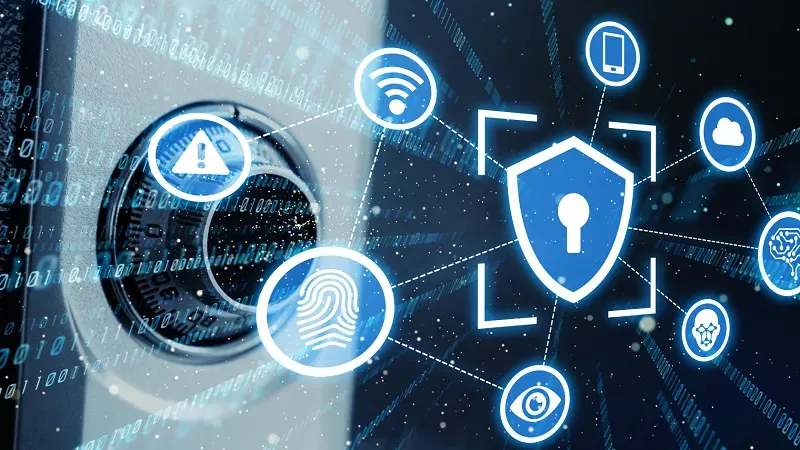7 Reasons Why Your Enterprise Needs Zero Trust Security

Cybersecurity solutions and best practises are the need of the hour—considering the increasing data breaches and online attacks.
When it comes to ensuring IT security and protection—a Zero Trust Security model offers multiple benefits to the organisations and their data, systems, applications, and overall network. Hackers are always on the lookout for security loopholes to get into your systems and hack critical business data and information.
This article discusses Zero Trust Security and its benefits to your enterprise.
What is Zero Trust Security?
Zero Trust Security is a network and application security solution that doesn’t automatically allow access or trust devices or users before a strict verification and authentication for every internal and external user.
It relies on and follows the principle of “don’t trust anyone” and cuts all access points and entries until proper user verification is done.
Hence, the Zero Trust Access security model provides security against data breaches by eliminating the concept of trusting all users and ensuring the highest level of security.
7 Benefits and Reasons to Opt for Zero Trust Security for Your Enterprise
Here are some reasons that make adopting the Zero Trust Security model more imperative than ever in this day and age and, of course, the remote working environment.
Ineffective perimeter-based security requires a replacement
The need for different digital technologies and devices is constantly evolving and changing in enterprises. These digital transformations make the traditional perimeter-based security models irrelevant and inefficient as they no longer ensure robust security.
A Zero Trust Model implements micro-segmentation to authenticate users and approve access requests at each point within the network. Hence, it ensures that no user gets unauthorised network access, and instead, each request is authenticated and verified before the access is granted at any part of the network.
Third-party applications authentication
You cannot blindly trust the third-party Software-as-a-Service (SaaS) and Platform-as-a-Service (PaaS) applications as the Original Equipment Manufacturers (OEMs) that develop these applications have little to no ownership of the software components used in building the applications.
The Zero Trust approach deploys security controls—assuming that the network is already unsafe and compromised. And no other process or unauthorised application is granted access to run and requires authentication to access the data.
Secures remote workplace
The sudden shift to the remote working environment—or “Work From Home” or (WFH) is one of the biggest challenges enterprises and businesses faced in the past couple of years.
According to statistics, 73% of IT professionals are concerned that the remote and distributed workforce has increased the exposure and introduced new security vulnerabilities.
Zero Trust Security controls and prevents data breaches and cyberattacks because of its “trust no one, and verify everything” principle—enforcing access controls across the entire network.
Provides greater visibility
The Zero Trust architecture offers granular access and visibility to each of the user activities and endpoints of the network.
It secures all the computing resources and information and enforces a stringent authentication process to grant access to specific network resources. Once you set up network monitoring—you gain complete control and visibility over who accesses your network and how.
It also helps flag suspicious activities and users—keeping track of their location, time, and application involved in each user request.
Shared security responsibilities in cloud data centres
Critical business workloads and applications are moving to hybrid or public cloud from the corporate data centres, and the new cloud-based environment needs a shared responsibility model, where while the service provider provides some security aspects, the majority falls on the enterprise.
Zero Trust Security ensures that the underlying trust on the cloud infrastructure is no longer the same and spans the shared cybersecurity responsibilities.
Prevents all-access to the expanding workforce
Organisations are no longer restricted to working with just employees and customers. Many users that access network and business applications include contractors, partners, or suppliers.
It’s best not to grant access to critical business applications and data to all these users, including employees. Instead, you can provide access based on specific trust dimensions of the Zero Trust policy.
It allows you to control user access, including those with elevated access, precisely.
Increasing cyberattacks
So business or sector seems to be immune to the increasing cyberattacks and online security threats—including healthcare, retail verticals, financial institutions, eCommerce businesses, and transportations service providers.
With a Zero Trust Security model in place—you can strengthen and build a stronger security posture to become cyber resilient and less vulnerable to security attacks and breaches. In addition, it helps prevent reputational and financial damages and ensures the utmost credibility.
Conclusion
The future of the utmost and robust cybersecurity is the Zero Trust Security model.
It replaces the traditional, outdated, inefficient perimeter-based security with a much more secure, aware, proactive, and efficient solution.
Therefore, if you want to ensure a secure network infrastructure and eliminate cybersecurity risks, check out our service at InstaSafe. Our InstaSafe products include Zero Trust Access for modern workforce requirements, providing an authorised and granular access control with better visibility.
So, opt for our services for your enterprise network to defend it against potential data breaches and online attacks.
Key Products
Zero Trust Application Access | Zero Trust Network Access | Multi Factor Authentication | IAM Identity And Access Management | Secure Enterprise Browser
Key Features
SSO Single Sign On | Endpoint Security | Contextual Based Access Controls | Always On VPN Connection |Clientless VPN | Device Binding | Device Posture Check | Domain Joining
Key Solutions
VPN Alternative Technology | Secure Remote Access Solutions | Cloud Application Security | DevOps Security | VoIP Security Solutions
